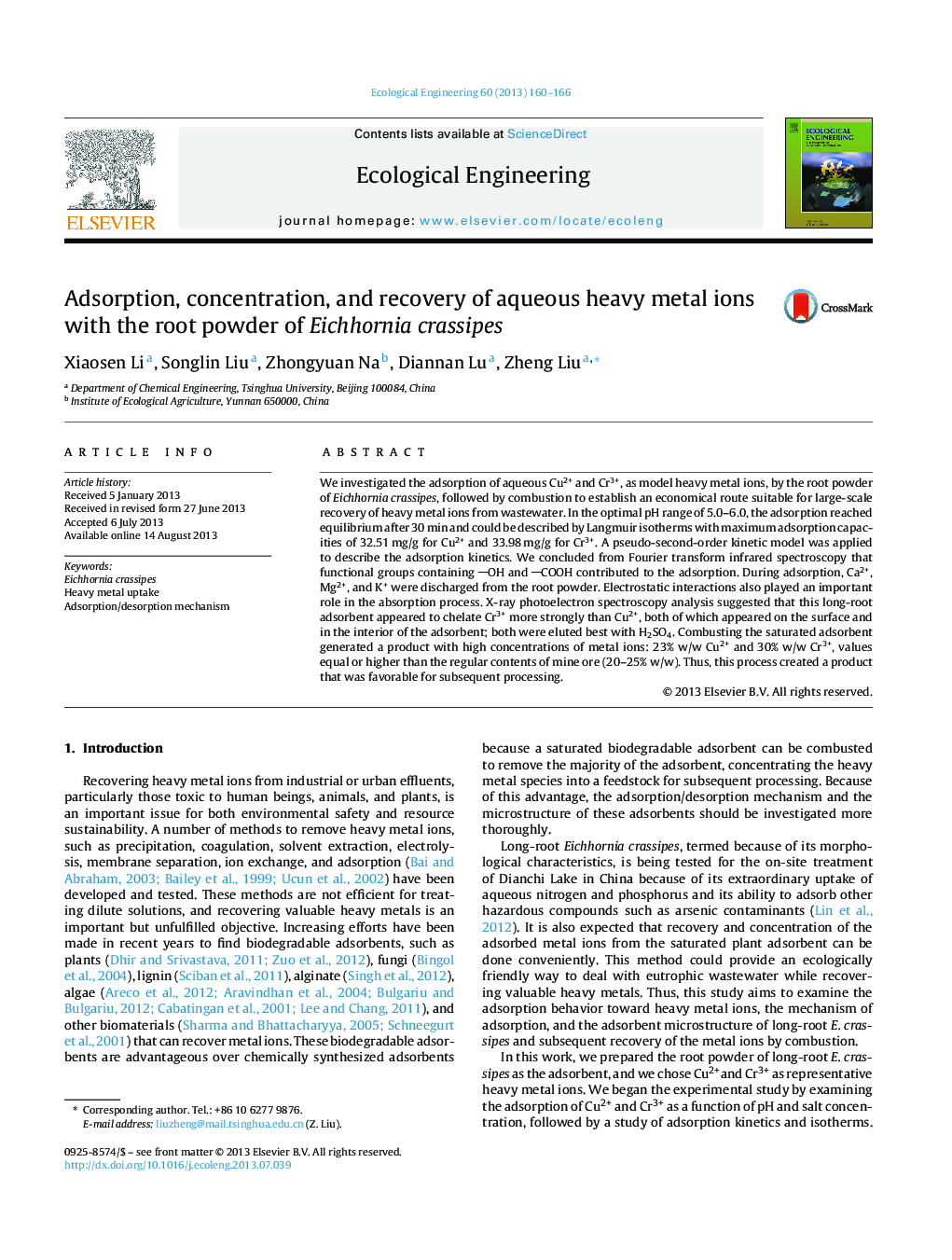| Article ID | Journal | Published Year | Pages | File Type |
|---|---|---|---|---|
| 6302380 | Ecological Engineering | 2013 | 7 Pages |
We investigated the adsorption of aqueous Cu2+ and Cr3+, as model heavy metal ions, by the root powder of Eichhornia crassipes, followed by combustion to establish an economical route suitable for large-scale recovery of heavy metal ions from wastewater. In the optimal pH range of 5.0-6.0, the adsorption reached equilibrium after 30Â min and could be described by Langmuir isotherms with maximum adsorption capacities of 32.51Â mg/g for Cu2+ and 33.98Â mg/g for Cr3+. A pseudo-second-order kinetic model was applied to describe the adsorption kinetics. We concluded from Fourier transform infrared spectroscopy that functional groups containing OH and COOH contributed to the adsorption. During adsorption, Ca2+, Mg2+, and K+ were discharged from the root powder. Electrostatic interactions also played an important role in the absorption process. X-ray photoelectron spectroscopy analysis suggested that this long-root adsorbent appeared to chelate Cr3+ more strongly than Cu2+, both of which appeared on the surface and in the interior of the adsorbent; both were eluted best with H2SO4. Combusting the saturated adsorbent generated a product with high concentrations of metal ions: 23% w/w Cu2+ and 30% w/w Cr3+, values equal or higher than the regular contents of mine ore (20-25% w/w). Thus, this process created a product that was favorable for subsequent processing.
